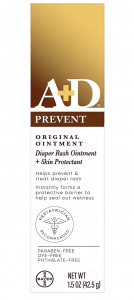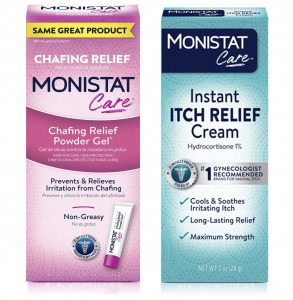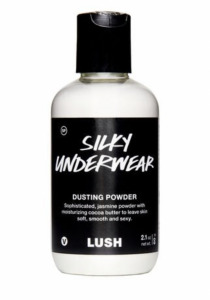When most people learn that my summer hobby is to run 100-mile foot races, they typically respond in one of two ways: “I don’t even drive that far” or “Wow, doesn’t that hurt?”
I’ll let you in on a little secret: I don’t drive that far, either; and yes, of course it hurts – but not in the way you might think.
You see, you can consciously train your muscles to withstand the beating of the ultramarathon distance, so any finish-line soreness is easily remedied with a sports massage or baking soda bath. What you can’t train your body to beat? The infamous runner’s rash, or chafing, that simple skin irritation that burns like a mofo, especially when you hop in the shower after a hot and sweaty workout.
Even if you’re not a runner, you can likely wince in empathy, because who hasn’t battled “chub rub” after a day in the summer sun? Despite the not-so-endearing nickname, chafing doesn’t just afflict the “thicc” or out-of-shape. Whether your sore spot is between the thighs, closer to your crotch, or around the bra line, we’ve all felt the familiar sting and tearfully wished it away.
The good news is that chafing isn’t inevitable, whether you’re running 100 miles or trying to look cute in a sundress. What’s the secret to stop chafing? We rounded up a panel of experts to serve you the skinny on protecting your skin with these chafing remedies.
What Is Chafing?
“Chafing is a common skin problem caused by any combination of friction, moisture, and irritating fabric,” explains Dr. Rachael Burns, a consultant dermatologist at Sönd. “Prolonged rubbing on the skin elicits stinging or burning, which presents as a mild, red rash. In severe cases, chafing results in swelling, bleeding, or crusting,” she says.
Chafing can occur anywhere on the body where the skin rubs together or on pieces of clothing. The thighs, buttocks, nipples, groin, feet, and armpits are the most commonly affected areas.
What conditions are the most likely culprits? “Causes include endurance sports, like biking and running; being overweight; diapers; and ill-fitting clothes,” explains Dr. Anna Chacon, a dermatologist and medical reviewer at My Psoriasis Team. Chafing becomes most problematic in hot, humid weather because we tend to sweat more, and the moisture from sweat is irritating to the skin.
How Can I Prevent Chafing?
“The number one thing to do to prevent chafing is to stay cool and dry,” recommends Melissa Gilbert, an esthetician at Fantastic Services. “It’s difficult, but the best thing you can do if you’re sweaty is to change out of wet, sweaty clothing as soon as you can. Staying in them can harbor bacteria that further aggravate your skin. It can set you out not only for chafing but also skin infection,” she says.
But with ever-increasing temperatures due to climate change, staying cool and dry is not always an option. In that case, Gilbert offers these hot tips on how to stop chafing:
-
Fan your skin. “Carrying around a little handheld fan is annoying, but it can actually help a lot,” Gilbert says. “Taking a little break and going to the bathroom to fan can help your skin dry. Patting the skin dry is also a solution.”
-
Avoid shaving. “Hair can actually help in reducing some of the friction,” Gilbert explains. “The act of shaving if you already have chafing is an irritant on the skin that aggravates the problem. It’s not a cosmetically ideal solution, but taking a break from shaving can help you greatly. The other reason for taking a break from shaving is that when your skin is already in friction and inflamed from chafing, that will increase the risk of ingrown hairs developing, which can be painful and uncomfortable.”
-
Choose your clothing wisely. “Your clothing matters a lot. Choose synthetic fabrics because they don’t absorb moisture as much and wick away sweat,” Gilbert says. “This helps keep it off your skin as opposed to cotton, which becomes drenched with sweat easily.” Also, she advises, choose loose fabrics over tight ones. “When dealing with chafing, avoiding jeans is a good solution because they cause a lot of friction between the inner thighs.”
-
Use an aluminum deodorant. “Aluminum chlorohydrate and aluminum hexahydrate antiperspirants can also help,” Gilbert says. “If you use them consistently, they can reduce the output of sweat. Their use doesn’t have to be restricted to under the armpits – you can also use them on other areas of your body where you sweat excessively.”
-
Use a powder to absorb sweat. “However, beware that if you put it on when you’re already sweaty, it can clump up, which can end up being abrasive and more irritating to your skin,” Gilbert warns.
How Can I Treat Chafing?
If you’re too late to escape a nagging rash, don’t despair just yet – there are measures you can take to treat it. “Let the skin heal overnight by leaving it exposed to air while sleeping. While it’s healing, clean the area with only mild soap and water, so you don’t hinder the healing process,” Gilbert recommends. Also, “avoid showering with extremely hot water and harsh soaps because they can make your skin overly dry and more susceptible to damage. If you experience pain, use ice packs for short amounts of time to relieve it,” she says.
In the meantime, you can gently pat the affected area with petroleum jelly or a soothing balm or oil. “It is essential to prioritize hydrating ingredients when looking for an anti-chafe product,” Burns recommends. “These aim to coat the skin with a protective layer against environmental aggressors. Zinc oxide, dimethicone, and petroleum jelly are particularly effective, along with aloe vera and vitamin E, which calm irritated skin.”
The Best Products For Chafing
Already stuck with a stubborn rash and shopping for products for chafing thighs? Try one of these dermatologist- and esthetician-approved anti-chafing products:
Body Glide Original Body Anti-Friction Balm

This brilliant balm is sweat- and water-resistant, cruelty-free and vegan, and made from allergen-free ingredients. According to dermatologist Dr. Hadley King, it “works well to create a barrier between your skin and workout clothing to reduce friction.”
Maja Perfumed Talcum Powder
This gentle powder eliminates friction and acts as a cleaning agent by absorbing bacteria-causing moisture. “Baby powder works really well for preventing chafing, but the downside is that it won’t stay for very long, and you may have to carry it in your bag. However, if you only need to be out for an hour or two, it’ll do the job,” Gilbert says.
A+D Original Diaper Rash Ointment
This pediatrician-recommended ointment contains lanolin and petroleum to soothe chafed skin and lips. “Using an ointment to the affected areas will act as a skin protectant and reduce damage to the skin barrier, preventing chafing,” Gilbert explains.
Aquaphor Healing Ointment
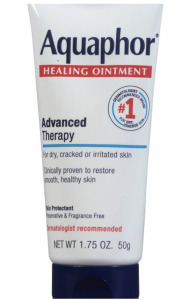
This healing ointment is specially formulated for sensitive skin to nourish and create a protective barrier. “I recommend zinc oxide or petroleum-based products [like Aquaphor] to help heal the affected skin,” says dermatologist Dr. Lindsey Zubritsky.
Coconut Oil
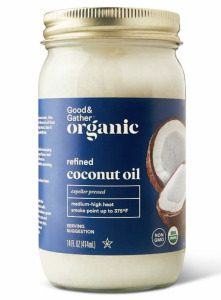
This organic oil is just as soothing on the skin as it is smooth in your recipes. “Coconut oil is a natural anti-inflammatory and full of fatty acids that help improve the skin barrier,” explains dermatologist Dr. Rachel Nazarian.
Squirrel’s Nut Butter
This anti-chafe salve stick contains all-natural ingredients like coconut oil, cocoa butter, candelilla wax, and vitamin E oil. As a runner, it’s my personal favorite treatment and a staple during long runs.
Monistat Care Relief Pack
This relief pack includes an anti-chafing powder gel and instant itch relief cream. “When you put it onto your skin, it turns into a powder-like texture,” Gilbert says. “It’s like a primer, and you can use it all year round.”
Silky Underwear Dusting Powder
This jasmine powder contains cocoa butter, vetiver oil, and cornstarch to both refresh and absorb moisture. “It works to prevent chafing really well, and it smells amazing,” Gilbert says. “It’s made with all-natural products that make your skin smooth and soft. It doesn’t last very long, but luckily, the bottle doesn’t make it inconvenient to carry around. It’s a better alternative to baby powder.”
Degree Advanced Motionsense Antiperspirant And Deodorant
This small but mighty stick keeps your sweat at bay for 72 hours. “It’s a good old trusty solution to chafing,” says Gilbert. “It lasts a long time, so you can always carry it in your bag.”
Molasus Women’s Cotton Anti-Chafing Bike Shorts
Want extra protection in your clothing? These cotton shorts are sustainably made with breathable wicking fabric to reduce friction. “They’re not the perfect solution, but they help protect your thighs from chafing,” Gilbert says. “The materials [of slip shorts] are soft and breathable, and they perfectly mold to your body.”
SHOP ON AMAZON – $26.99-$37.99

What are your favorite anti-chafing products? What are your most gruesome chafing stories? Tell us the gory details below!
Keep Reading Below For The Latest Beauty And Skin Trends:



